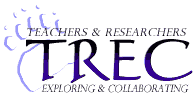






 |





 |
| |
|

TREC
Program Description: Arctic Field Research Experience
The
core of the TREC program is the field research experience, whereby TREC teachers
participate in arctic field research for two or more weeks during spring/summer.
Selected research projects represent the leading edge of scientific inquiry
and include the K-12 teacher as integral part of science team.
Classrooms and Public Connections Teachers and researchers connect with classrooms and the broader public through use of internet tools such as online teacher and researcher journals, message boards, photo albums, real-time presentations and calls from the field, and online learning resources. Professional Development TREC provides professional development opportunities for teachers who participate in field research projects as well as educators who connect through the Internet. TREC provides a variety of content, tools, and seminars geared towards subject matter learning, teaching practices, and alignment of TREC experiences with current professional and teaching standards. Sustained Community and Support The TREC program is designed to extend the experience beyond field research to support a sustained community of teachers, scientists, and the public through traditional workshops, internet seminars, an e-mail listserve, and teacher-to-teacher peer groups. Through the above components, the TREC program aims to invigorate science teaching and learning through increased content knowledge and enhanced teaching skills among a collaborative network of researchers, teachers, and communities. For questions or comments about the TREC program, please contact us. Photp Credits: Noctilucent clouds over Valkeakoski, Finland. Photo by Tom Eklund. Center: Blaine Anderson and Brian Dunphey excavate a midden at a 16th century Inuit sod house site on Iglosiatik Island in Labrador. Photo by Susan Kaplan. Right: A diver in Stefansson Sound in the Beaufort Sea sets up a system to measure light and kelp photosynthetic activity under 2 m of fast ice. Photo by Ken Dunton. |
|
| |
|